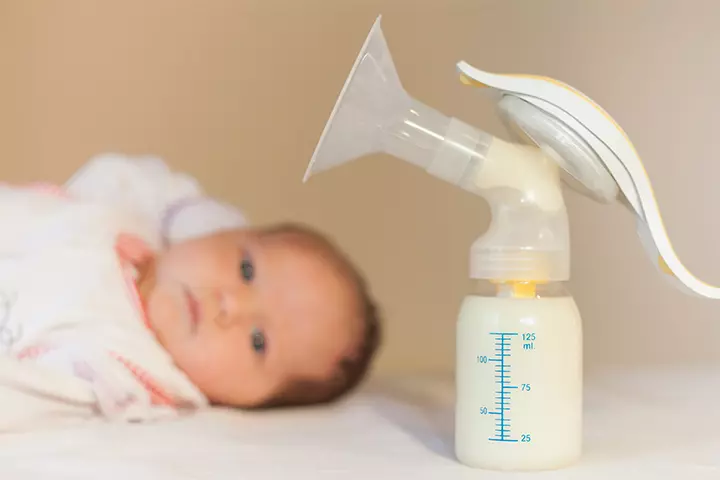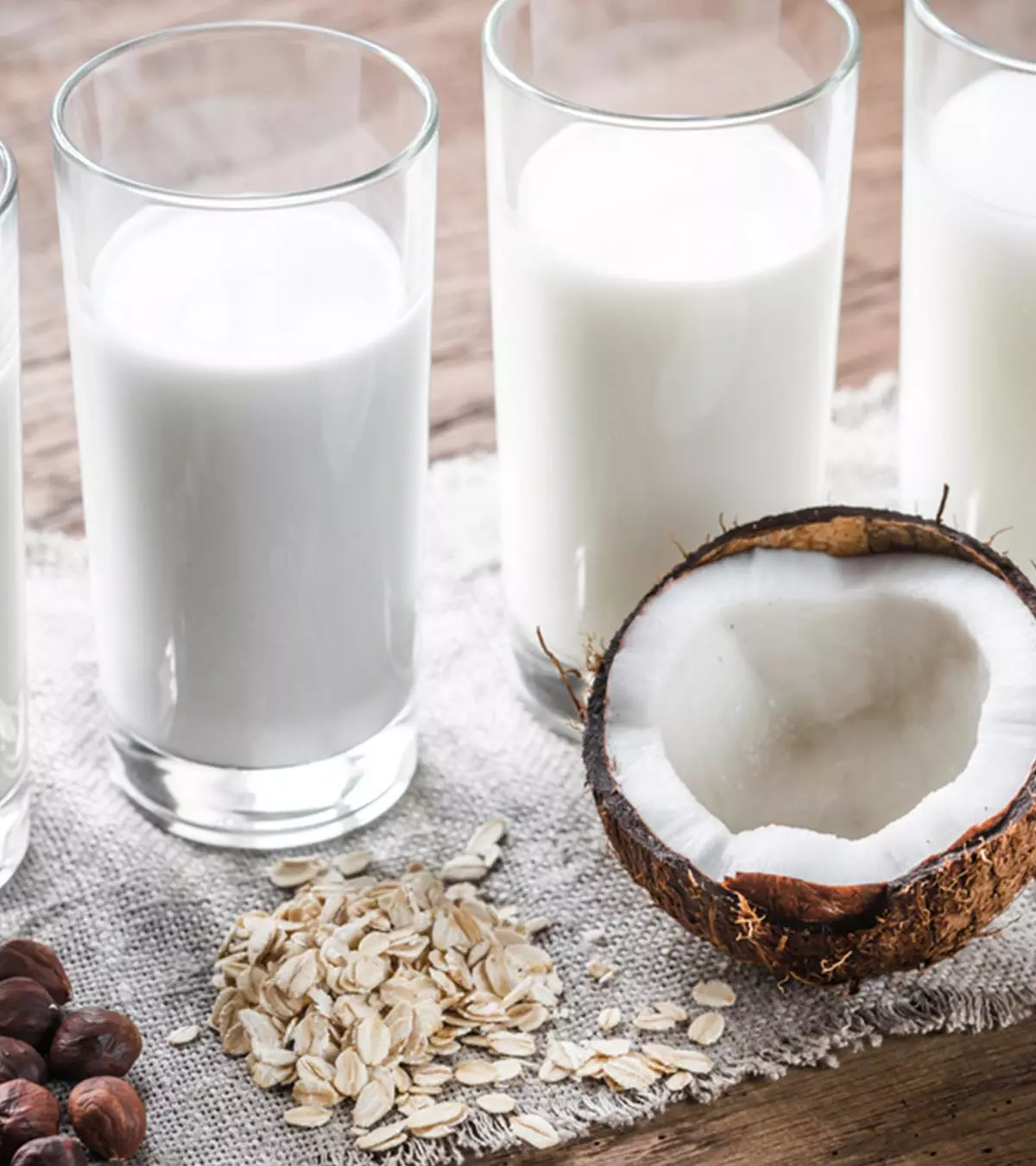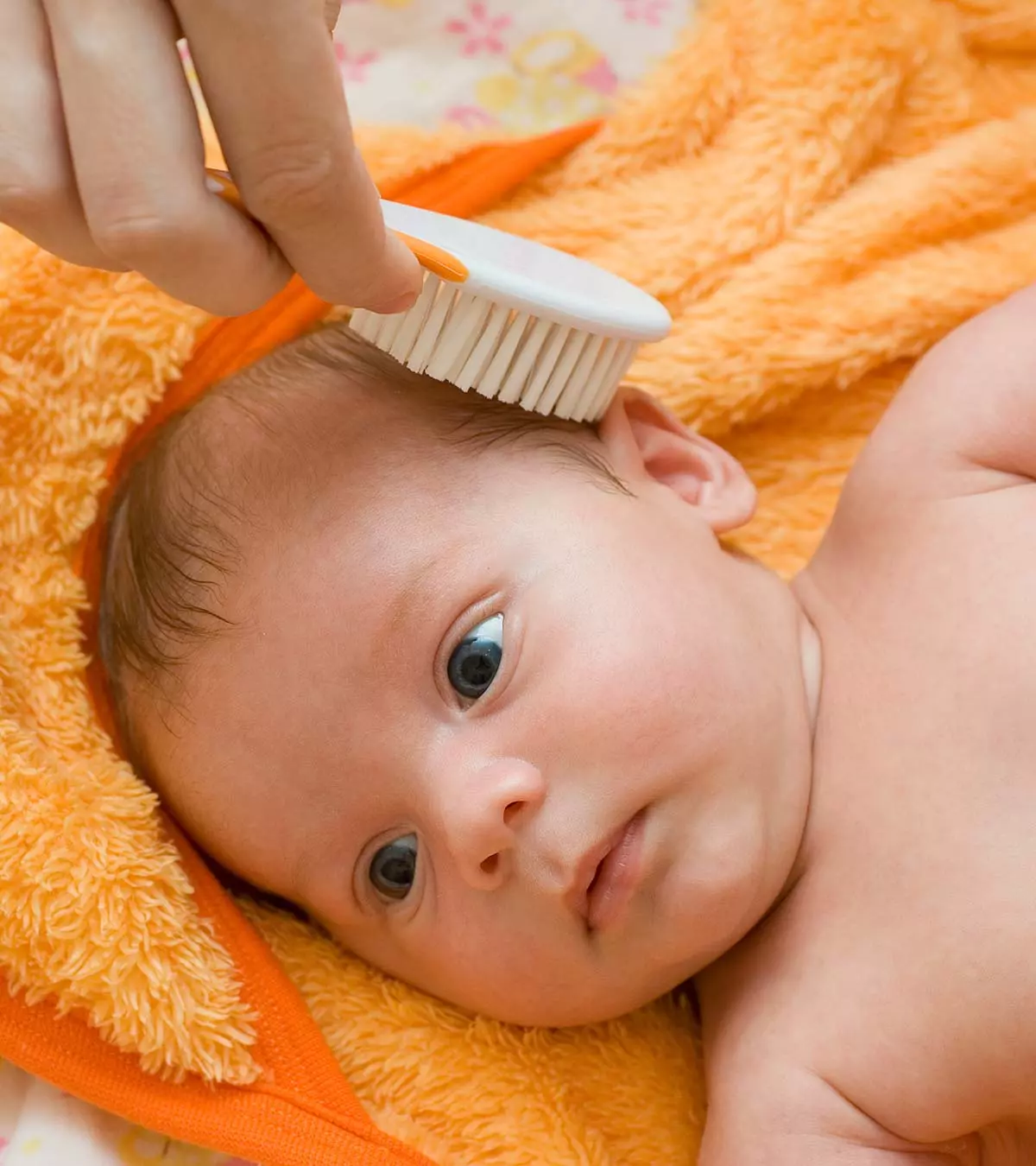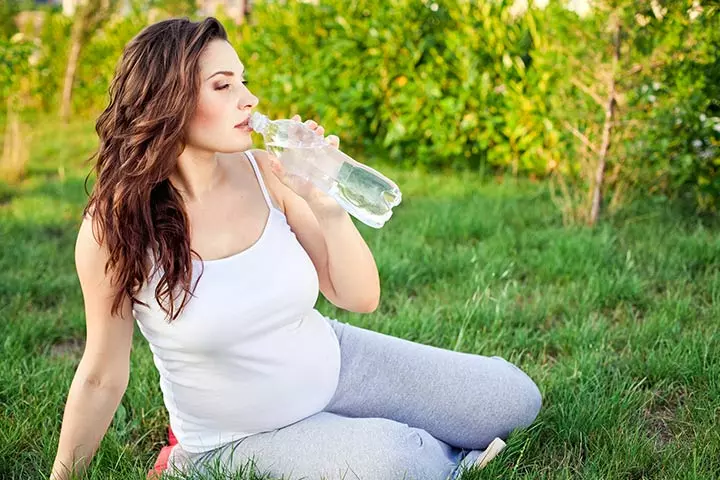
Image: ShutterStock
Breast changes during pregnancy increase maternal breast size. But then still, some mothers may have small breasts, and they might want to know if breastfeeding with small breasts affects breast milk supply. Generally, breast size does not determine one’s ability to breastfeed.

Mothers with smaller breasts can have a normal milk supply as milk production and supply are determined by hormones and how often you breastfeed. Therefore, if you have concerns regarding milk supply, frequent feeding can help establish a robust demand and supply cycle, which will boost your milk supply and help effectively meet the baby’s nutritional needs.
Read on to learn more about the breast milk supply, its storage, breast changes during breastfeeding, and tips to breastfeed with smaller breasts.
Key Pointers
- Breast size does not usually affect how much milk the breasts produce since it is governed by the number of alveoli (milk-creating cells) present.
- The milk storage capacity of the breasts has nothing to do with their size as well.
- If you are still concerned about breastfeeding with small breasts, you can increase the frequency of feeding and feed from both breasts.
Do Small Breasts Make Enough Breast Milk?

Breast size may not affect how much milk is produced each time. The ability to produce and store milk depends on the number of alveoli with milk-creating cells present in the mammary glands (breasts). Most women develop enough glandular tissues during pregnancy, irrespective of their breast size (1). There is no evidence to suggest that smaller breast sizes could have a negative impact on infant feeding.
Larger breasts with more fatty tissue may not have more milk supply since fatty tissue does not have any role in milk production or storage. According to breast anatomy, the alveoli cluster together to form lobulesiMilk-producing gland in the breasts. , and could determine milk production. Women with fewer breast alveoli, irrespective of their breast size, may have to feed more often as their baby grows older. Furthermore, it is important to note that breast augmentation surgeries or any other breast surgery may negatively affect your milk supply.
 Quick fact
Quick factHow To Breastfeed With Small Breasts?
The following strategies may help meet infants’ nutritional requirements in mothers with small breasts.
- Frequency: You may feed more frequently to ensure the baby gets enough milk in each feeding session.
- Feed from both breasts: Babies can get more milk if you feed from both breasts in each feeding session.
- Latch: Ensure that your baby latches correctly to the nipple.
- Breastfeeding hold: Mothers with smaller breasts may try V-hold with two fingers than U-hold or C-hold around the areola to make the feeding comfortable. Ensure that your fingers are not placed too close to the nipple.
- Seek support: If you need more help to establish feeding positions and techniques, seek support from a certified lactation consultant.

Breastfeeding Positions For Women With Small Breasts
You may feed in any comfortable position for you and your baby. Your position doesn’t matter. Get comfortable and be prepared to be in that position for a while. Laid-back breastfeeding is recommended for all mothers in the initial stages regardless of breast size. You may try various breastfeeding positions to find a comfortable one. Your baby’s position matters to get a deep latch.
Tips For Breastfeeding From Small Breasts
The following tips may help to feed well from small breasts.
- Ensure proper latch and position: This may help the baby to suck and swallow enough milk. Describing her breastfeeding experience with small breasts, Aishah, a mother, states, “Thank goodness, I didn’t have any issues feeding with small breasts. My baby Ava didn’t have any problems latching on, and it has been successful (i).”
- Switch which side you offer first: Rotate which breast you start with. If you have a breast that produces less, you can offer that one a little more often, but try to switch and not favor one breast over the other. .
- Feed frequently: Milk production is enhanced when the prolactiniThe hormones responsible for lactation and the development of breasts. hormones are released in response to the baby sucking reflex or the milk letdown reflex. If the baby is fed more frequently, mothers may have more milk supply.
- Use a pump: A quality breast pump with the right size pump flange may help empty the breasts after feeding and create an artificial demand to enhance milk production.
- Breast compressions: Breast compressions by hand can stimulate milk flow and make it easier for the baby to get enough milk.

- Use comfortable nursing bras: Pick a nursing bra that fits you well and provides optimum breast support without causing discomfort.
- Track baby’s growth: If your baby is growing and developing at a normal pace, this indicates that they are getting the required nutrition from breast milk.
Do Breasts Go Through Changes For Breastfeeding?
Breasts go through changes during pregnancy to prepare for breastfeeding. You may notice increased size and fullness of breasts during pregnancy. These changes may also occur two weeks after delivery since the breast milk production adjusts to your baby’s requirement at this time. Areola and the nipple skin color may become darker in breastfeeding mothers. Your nipple size may also alter during breastfeeding.
If breast milk production is more than the newborn’s requirement, breasts may become engorged with milk. You may express breast milk and store it to relieve engorgement. The more you remove milk, the more you will make, so be cautious with removing too much as it will perpetuate the oversupply.
Why Does One Breast Have More Milk Than The Other?

Natural asymmetry can be the reason for uneven milk production from breasts. One breast may have more milk than the other in the following circumstances.
- More milk-producing tissue (glandular tissue)
- Forceful letdown responseiAn occurrence where milk comes out too fast and forcefully from the breasts when the baby begins suckling.
- Large milk ducts
- Baby consumes more from one breast, stimulating it more than the other
You may speak to a certified lactation consultant to determine the possible underlying cause for one breast producing more milk than the other.
Will Breastfeeding Change Your Breasts’ Looks?

The breast may change in appearance in all women, irrespective of lactation or not. Pregnancy usually causes more breast changes than breastfeeding. Increased breast size and fullness during pregnancy may cause stretching of ligaments supporting the breasts.
It is a myth that breastfeeding may make the breasts saggy or droopy. Breasts may appear less firm due to the following conditions.
- High BMI (body mass index)
- Several pregnancies
- Smoking
- Larger pre-pregnancy breast size
Breasts do not have any muscles and may go back to pregnancy size after two or three weeks of delivery and gradually reach pre-pregnancy size if you have the same body weight. Fat tissues eventually replace milk-producing tissues within six months or after stopping breastfeeding.
What About The Storage Capacity Of Breasts?
The storage capacity of breasts is not directly related to the breasts’ size. It depends on the milk production and the number of lactation tissues (alveoli) in the breasts. Storage capacity may vary slightly in each breast.
Storage capacity may vary slightly in each breast. You may use breast pumps to know the amount of breast milk stored in each breast. This can be measured by pumping the milk-filled breast until it is empty. You may pump in the morning, one or two hours before feeding. Pumped milk can be stored in a bottle for later use (2). Speak to a lactation consultant if you feel the breast milk’s quantity is less than what it should be or there is a significant difference in each breast’s milk storage capacity.
When To Be Concerned?
It can be concerning if breast size does not change during pregnancy or the first week postpartum. This may indicate lactation failure, true low milk supply, or hypoplastic breasts (insufficient glandular tissue), which may interfere with adequate breastfeeding. However, some women without any breast changes in pregnancy or postpartum can have a normal milk supply. You may talk to your doctor if you are concerned.
 Did you know?
Did you know?Frequently Asked Questions
1. Can a woman breastfeed with underdeveloped breasts?
Women with underdeveloped breasts have a condition called mammary hypoplasia. Although these breasts produce normal hormones, they lack the glandular tissue to produce sufficient milk for their babies (3).
2. Do soft breasts mean a low milk supply?
After six to eight months of childbirth, the lymph and blood flow to the breast decreases, so they start feeling softer. This does not necessarily mean you have a low milk supply (4).
3. Are flat nipples a problem for breastfeeding?
While having flat nipples is harmless, it may cause breastfeeding difficulty due to latching problems. That said, trying adjusted breastfeeding positions and using some other methods, such as the Hoffman technique, manual stimulation of breasts, or a suction device, may help you breastfeed with flat nipples (7).
4. Will my nipples go back to normal after breastfeeding?
Yes, in most cases, nipples return to their original size and color once the mother stops breastfeeding (8).
5. How can I make my nipples erect while breastfeeding?
Some techniques, including rolling your nipple between your thumb and forefinger, compressing your breasts to push your nipple outwards, and touching your nipple with a cold compress, can help your nipples get erect while breastfeeding (9).
The breast size rarely affects the breast milk supply or composition since this factor depends on the breast’s alveoli and not the fatty tissue. However, if you are concerned that breastfeeding with a small breast affects your milk supply, you may consult a medical professional to check if you are suffering from a low-milk supply. If no issues have been found with your milk supply, the doctor may suggest increasing the feeding frequency, alternative breastfeeding, or breastfeeding practices. You may even use the right latching technique as another way to ensure proper milk supply to the baby.
Infographic: Breast Hypoplasia And Tips To Breastfeed Your Baby
Mammary or breast hypoplasia is a condition that could be one reason a woman has an inadequate milk supply to sustain her baby’s feeding needs. Here is an infographic explaining more about this condition and tips to continue breastfeeding your baby.
Some thing wrong with infographic shortcode. please verify shortcode syntax
Illustration: Useful Tips For Breastfeeding With Small Breasts

Image: Dall·E/MomJunction Design Team
Personal Experience: Source
MomJunction articles include first-hand experiences to provide you with better insights through real-life narratives. Here are the sources of personal accounts referenced in this article.
i. Small breasts can breastfeed too;https://www.youtube.com/watch?v=wtS9dSd4pmY&feature=youtu.be
References
1. How Breast Milk is Made; WIC Breastfeeding support.
2. How Much Milk Should You Expect to Pump?; Breastfeeding USA
3. Megan W Arbour and Julia Lange Kessler; Mammary hypoplasia: not every breast can produce sufficient milk; (2013)
4. Low Milk Supply; Nursing Babies, Nurturing Families
5. Breastfeeding after Breast or Nipple Surgery; Cleveland Clinic
6. Hypoplasia; La Leche League International
7. Flat Nipples; Cleveland Clinic
8. How Your Body Prepares For Breastfeeding; Healthy Children; American Academy of Pediatrics
9. Inverted and Flat Nipples; La Leche League International
Community Experiences
Join the conversation and become a part of our nurturing community! Share your stories, experiences, and insights to connect with fellow parents.
Read full bio of Julie Matheney
Read full bio of Dr Bisny T. Joseph
Read full bio of Rohit Garoo
Read full bio of Anindita Ghatak

















